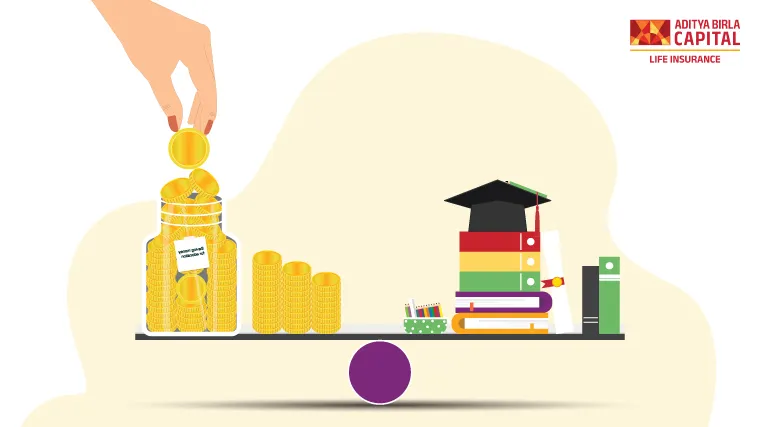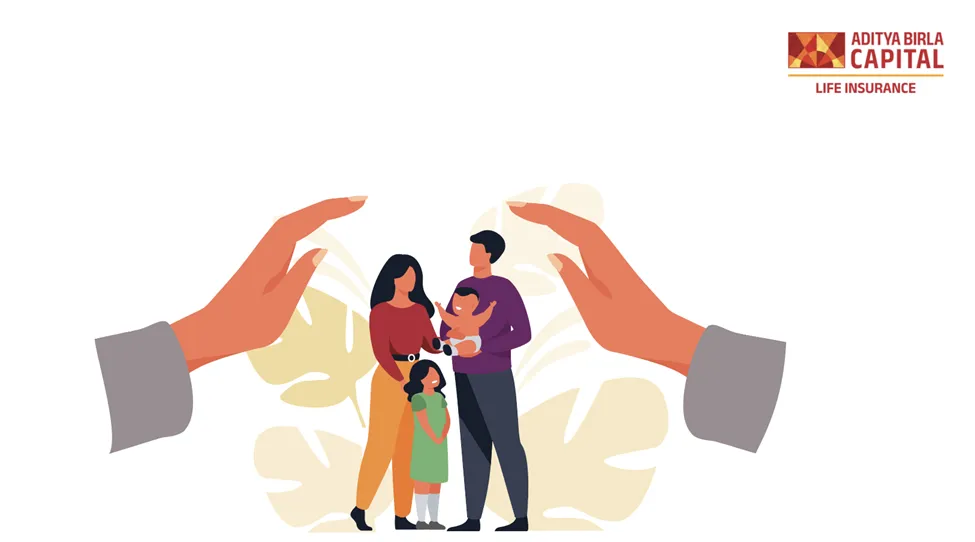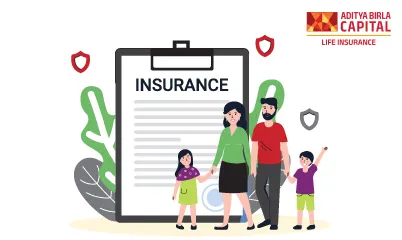Aditya Birla Sun Life Insurance Company Limited
What is Assured Child Education Savings Plan

Plan Smarter, Live Better!

Thank you for your details. We will reach out to you shortly.

Currently we are facing some issue. Please try after sometime.


- Table of Contents
As parents, we constantly desire the best for our kids, especially when it comes to school, and the dramatic rise in the expense of education is cause for concern. This has encouraged many parents to look for various financial opportunities to pay for their children's future, with Child Education Plans being one popular choice.
What is an Assured Child Education Plan?
Assured Child Education Plans, also known as Child Plans, are an investment plus insurance policy that is offered by multiple insurance providers all over the nation. These schemes are usually marketed as investment plans that enable parents to save money for their kid’s higher education by investing during the policy tenure. The insurance part of this scheme provides financial security to the policy-specified child in case of the unfortunate death of the parent.
How does Child Education Plan Work?
Child Education Plans are quickly becoming one of the most popular investment schemes for parents. A part of the insurance premiums goes to the insurance provider, which provides life cover to the parents, and the remaining part gets invested in an investment portfolio comprised of Debt and Equity instruments. It is this second part of the scheme which provides value to the investment made toward the child’s future education. Since this plan offers life coverage to the parent, the scheme has a maturity period when the policy-specified child turns 18 years old.
What are the Types of Assured Child Education Plans?
Here are the types of Assured Child Education Plans which are available to the Indian audience:
1. Child ULIP Policies
At the conclusion of the policy period, the Child Education ULIP policies offer out a lumpsum payment. While the maturity earnings of these policies can be utilised for anything, the primary intention is to generate cash for the kid's future education for whom the policy is acquired.
The Child ULIP plans, like other Life Unit-Linked Insurance policies, invest a part of the premium money in equity as well as debt instruments. The main distinction between a Child ULIP policy and other life insurance ULIP plans is the insurance tenure provided. While ordinary ULIPs have policy periods ranging from 10 years to 25 years, a Kid Education Plan ULIP pays out when the policy-specified child reaches the age of 18 years.
2. Child Endowment Policies
This sort of Child Education policy includes life insurance plus returns that are guaranteed1. When the kid hits 18 years of age, these plans generally make four distributions equal to a quarter of the sum insured plus appropriate incentives. Because of the guaranteed1 pay-outs, this form of Child Policy is minimal risk. Nevertheless, the returns provided by these plans are frequently low compared to Child Education ULIP policies.
What are the Key Features of Assured Child Education Plans?
The key features of Assured Child Education Plans include:
1. Life Coverage
Child Education Plans provide life insurance coverage, with the sum assured being up to ten times the yearly premium charged. This life insurance sum assured limit is set by India's insurance sector authority, the IRDAI (Insurance Regulatory and Development Authority of India). Therefore, for a Child Education Plan whose yearly premium amount is INR 30,000, the maximum sum assured amount will be INR 3,00,0000.
2. Investments
Policyholders in the Child Endowment Policies do not have the option of investing in particular asset classes. Insurance firms routinely choose assets for policyholders, which are generally debt investments like corporate bonds, government bonds, Treasury bills, and so on.
Child ULIP Policies, on the other side, provide policyholders some say over where their money is invested. Nevertheless, the quantity of funds available is restricted to those controlled by the insurance provider.
3. Lock-in Term
Both Child ULIP plans and Child Endowment Plans are now available in India, featuring a 5-year lock-in term. In just about all Child Plans, partial fund withdrawal is permitted after the sixth year. Once this 5-year lock-in period is up, the policyholder may choose to surrender the insurance plan and collect all the investment funds.
4. Fees and Charges
Both types of Child Education Plans feature some fees and charges that the policyholders need to pay. These fees and charges include premium allocation fees, fund management charges, policy administration fees, and others.
5. Tax Breaks
Due to the sheer life insurance element, premiums paid to maintain the child's education policy are tax deductible under Income Tax Act Section 80C. Nevertheless, there is a total restriction of INR 1,50,000 under Section 80C.
The payment from these policies is tax-free if the yearly premium payable is less than INR 2,50,000 per year. If the yearly premium paid surpasses the threshold of INR 2.5 lakhs, the payment will be taxed according to the relevant Capital Gains laws. This clause has been included in the 2021 Finance Bill.
Is Assured Child Education Plan Suitable for You?
At first appearance, a Child Education policy appears to combine major benefits like life insurance coverage, financial growth, and tax advantages2. However, a deeper examination exposes a number of restrictions that should be considered before subscribing to this sort of plan.
The most obvious limitations to the plan are low life coverage and few investment choices available. Child Plans' life insurance coverage is restricted to ten times the annual payment paid for the policy. So, for a 30,000 yearly premium, the life protection provided by Child Education policies is just INR 3 lakhs. Term life insurancepolicies provide much more coverage at a fraction of this price. When choosing a Child ULIP Education policy, policyholders have few options as to where their funds will be invested. Investment options are restricted to a few funds supplied by the insurance provider. Furthermore, for Child Endowment Plans, neither the insurance provider nor the policyholder determines the asset classes in which investments will be conducted. This confines policyholders' options when it pertains to deciding how much and in which assets to engage.
Investing in equity mutual funds using a SIP might be a feasible alternative to these Child Education policies. Parents can use SIP to make fairly little contributions over time to build adequate cash for their children's higher education. Furthermore, over a longer investing horizon, the potential for Equity Funds to outperform Child Education policies is substantially higher. Aside from that, investors may check the status of their assets on a regular basis and make necessary adjustments without incurring any charges.
With a plethora of tax-saving options available to choose from, it is the individual’s responsibility to weigh in all the factors before taking the plunge. Tax benefits2 are only one of the factors to be considered and hence, should not be seen as the sole reason for making an investment decision. The prospective investor must first decide on the amount that needs to be invested and thereafter, based on his/her individual goals like children’s education, choose a suitable option.
The Bottom Line
The bottom line is that you should consider all of your options carefully, not just Child Education Plans. Child Education Plans are a great way to save for your child's education, but only if you're certain that it will be the best method for you and your family. So, weigh all of the pros and cons before making your final decision, and be sure to consult with a professional if necessary.
Thank you for your details. We will reach out to you shortly.
Thanks for reaching out. Currently we are facing some issue.
Buy ₹1 Crore Term Insurance at Just ₹576/month^
ABSLI Salaried Term Plan
Exclusively For Salaried Individuals
4 Plan Options
Life Cover upto 70 years
Optional Accelerated Critical Illness benefit
Inbuilt Terminal Illness Benefit
Life Cover
₹1 crore
Premium:
₹576/month
Most Popular Calculator
Guaranteed returns after a month¹
¹ Provided all due premiums are paid.
² Tax benefits are subject to changes in tax laws. Kindly consult your financial advisor for more details.
ADV/11/22-23/2343







